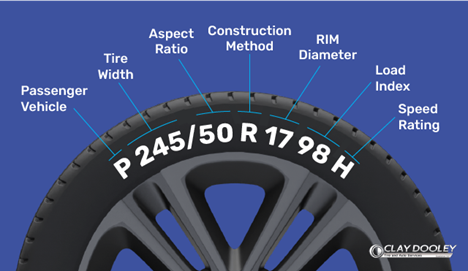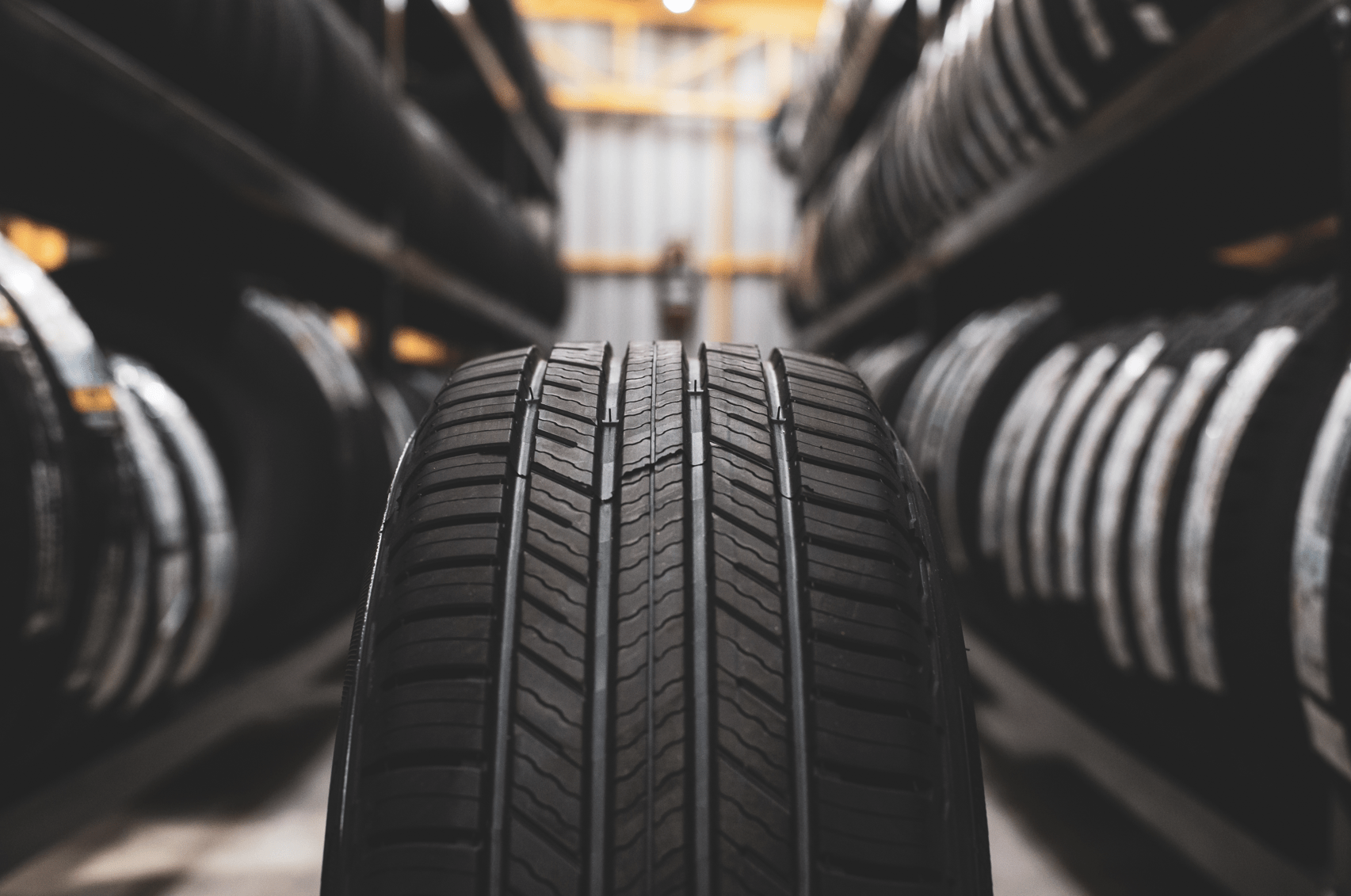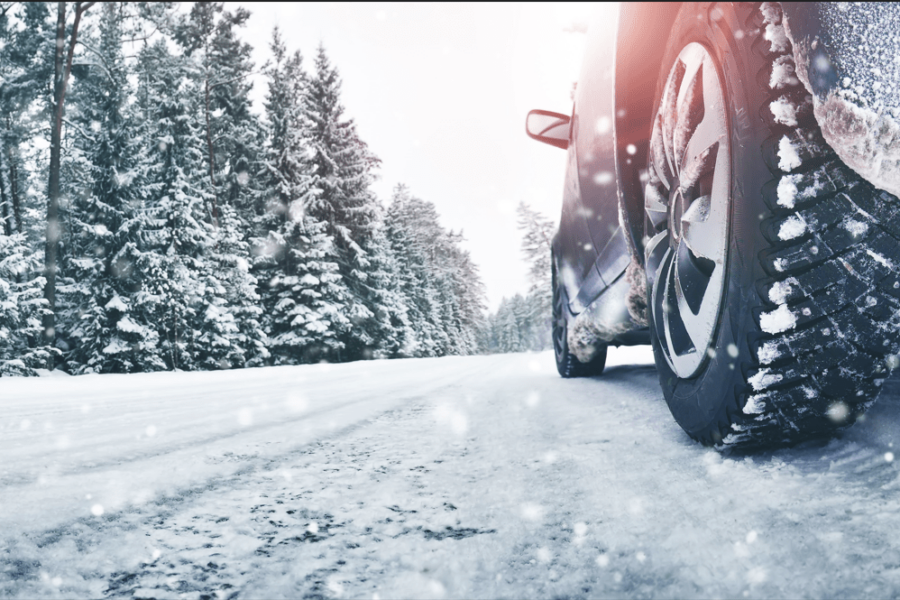With dozens of brands, sizes, and ratings, knowing how to choose tires can be a difficult decision, especially if you’re a first-time buyer. Whether you’re nearing the end of your tire’s lifespan or considering changing to a summer and winter set, you can narrow your search by knowing what kind of tire you want to buy before you start tire shopping.
This guide will show you the 6 most important factors you need to consider before you buy.
Factors to Consider When Choosing Tires
Before you set out to choose your new set of tires, it’s good to have a general idea of what you’re looking for, including the type of tire you want to buy, your budget, and your car manufacturer’s recommendations.
1. Type of Tire
There are four major categories of tires: all-season, all-weather, summer (performance), and winter tires. Knowing the differences between these kinds of tires, including the benefits and drawbacks, is critical to making the right tire choice.
All-Season Tires: All-season tires are the tires your car likely came with when it was new. These tires provide a good performance year-round but don’t have a ‘great’ performance in any season. Even though all-season tires are designed to be used in any weather, many people in snowy climates change out their all-season tires for winter tires anyway.
All-Weather Tires: All-weather tires are like all-season tires but not quite the same thing. Like all-season tires, all-weather tires are intended to be used year-round in all kinds of weather. They provide a decent, middle-of-the-road experience in most conditions. The main difference between all-season and all-weather tires is that all-weather tires perform better in snow but handle less sharply in warm weather.
Summer/Performance Tires: Despite their name, summer tires perform well down to about 45 degrees. Summer tires are also known as performance tires and for good reasons. Summer or performance tires have sharp, clean handling and can make your car feel highly responsive. They also drive better in the rain, brake faster, and have a higher speed rating than other tires. The drawback is that performance tires can crack and break in cold temperatures. They can also feel harsh and hard to control, especially if you’re not used to them.
Winter Tires: Winter tires, sometimes called snow tires, are unmatched in their winter performance capabilities. They are designed to have a wide, deep tread that grips ice and snow, which prevents your vehicle from slipping more than any other tire. The downside is that you can’t use winter tires in warm weather. Winter tires are made of a special rubber that stays flexible as temperatures drop. In temperatures above 45 degrees, the specialized rubber becomes too pliable and begins to break down, ruining the tire.
2. Season
By and large, winter tires are a good choice if you drive in winter conditions. In cold weather, winter tires are safer than other kinds of tires by a large margin. They turn tighter, stop faster, and can help your automatic braking system (ABS) work more effectively.
Even if your area doesn’t get snow and ice, you’ll still need winter tires that can help you maintain traction on cold surfaces. If you consistently have weather below 40 degrees, winter tires are highly recommended. If you live in a particularly warm region (and don’t plan to drive north in the winter!), it’s possible to keep your summer tires on year-round.
In fact, if you live in an area that sees warm, heavy rain in the winter, summer tires can offer superior performance to all-season tires, as they are designed to do well in wet conditions. Overall, if it’s possible for you to use summer tires all year, it’s an option that will provide you with a great driving experience.
3. Your Driving Style
Car enthusiasts tend to prefer tires that offer better performance and grip because they tend to pay attention to how a car ‘feels’ to drive. This means buying winter tires for winter conditions and performance tires for the summer, storing them, and having your tires installed every spring and fall.
Casual drivers might not notice as much of the difference with performance tires, especially in dry environments, so shelling out for high-end tires isn’t worth it for many drivers.
4. Your Budget
New tires can cost anywhere from $50 to $1,000 per tire, depending on the brand, type of tire, and size you need. Replacing your tires can be a significant portion of your maintenance budget, which is a primary concern for most people. The most expensive tires available are performance tires, followed by winter tires, and then all-season tires. Most people who buy one set of tires choose a mid-priced all-season option.
5. Speed Rating
Tire speed ratings are designated by a letter, which corresponds to a speed. The speed associated with the rating letter indicates the maximum speed a tire can go for an extended time. For example, an H tire is rated to perform well for extended periods up to 130mph. Most tires range from L to Y speed ratings, or 75 mph to 186 mph. A higher speed rating means you’ll have better control at high speeds, while a lower speed rating will usually give you a smoother, quieter ride.
While you have some leeway in choosing a tire speed, you should never go below your manufacturer’s recommendation. You can check the minimum recommended tire speed in your car’s manual.
6. Tire Size
Knowing what size tire you need is essential before choosing which tire you want to buy. For the most part, you should use the tire size recommended in your car’s manual or the number inside the driver’s side door, but there are some measurements where you have leeway.

It’s good to understand how to read tire sizing, so you know where you have flexibility. Take the following tire size as an example: P245/50R17 98 H
- The ‘P’ indicates that the tire is for a passenger vehicle, and ‘250’ indicates the tire’s width. You should use the manufacturer’s recommendations for both measurements.
- The first number after the slash is the aspect ratio (a tire’s height over its width). In this example, the aspect ratio is 50. The aspect ratio is followed by a letter (usually an ‘R’) that indicates the construction method. These measurements are largely irrelevant for the average user, but you should make sure that you use the same size recommended in your user manual.
- The ‘17’ indicates the RIM diameter. It’s important to use a diameter that matches recommendations from your car’s manufacturer. You can deviate from the recommended car tire for the last two measurements. The ‘98’ indicates the load index. You can use a number with a higher load index than your default tires, but never lower.
- The ‘H’ indicates the tire’s speed rating. In this case, the speed rating is 130 mph. When choosing tires, you can use a higher speed rating than your recommended tires, but not lower.


